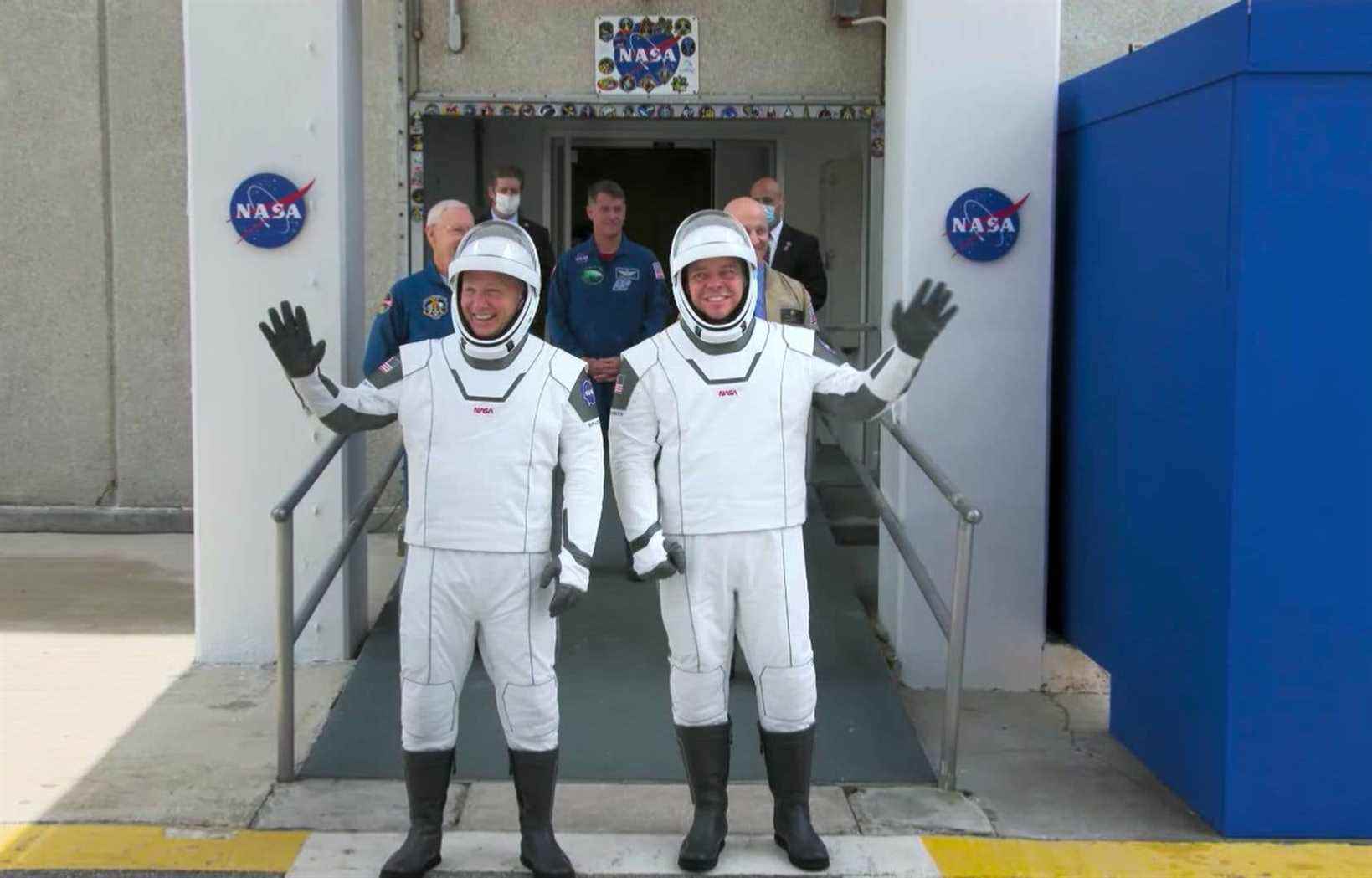In a narrow white corridor resembling the setting of Star Wars, Elon Musk details his vision for the future of space exploration. In front of him, astronauts nod their heads with interest. At their side, the big boss of the American space agency, Jim Bridenstine, is very enthusiastic. He smiles crookedly, and his eyes are filled with hope: the private sector is coming to the rescue.
“NASA has been neglected for 50 years,” says Mr. Bridenstine. And the NASA administrator that I am tells you that it is a national failure. But thanks to private partnerships, as with SpaceX, we have the opportunity to remedy this. »
The scene, taken from the documentary Return to Space launched on Netflix on Thursday, illustrates that the dream of space is very strong in the private sector. A dream that is still just as big, still just as American, but now widely supported by the business world.
Oscar-winning director couple Elizabeth Chai Vasarhelyi and Jimmy Chin’s SpaceX foray orbits the ‘Demo-2’ flight, launched in May 2020, which for the first time carried two astronauts aboard a commercial rocket to the Space Station international.
Thanks to this exploit, SpaceX, the darling baby of billionaire Elon Musk, now benefits from juicy contracts with NASA to supply the orbital station and lead crews there. Since the retirement of the space shuttles in 2011, the United States had to rely on Russian rockets to send its own astronauts to the skies.
“We had to completely reinvent ourselves, by setting up a whole new program. And to do this, we had to turn to the private sector. […] Calling on the private sector was a symbol of innovation,” says Lori Garver, a former NASA deputy administrator, in an interview for the film.
Headwinds
The portrait painted by Vasarhelyi and Chin — filmmakers fascinated by characters pushing the limits of the possible, as evidenced by their documentary Free Solo on professional free-solo climber Alex Honnold — is decidedly positive. Obviously, the failures of this mad enterprise are not concealed, but rather serve to highlight the tenacity of Musk and company.
The history of SpaceX, founded in 2002, is indeed littered with explosions. His approach, more cowboy than NASA’s, is based on trial and error. Rather than calculating everything on paper, we launch an (unmanned) rocket, watch it deflagrate, and then adjust. This strategy allowed him to develop a reusable rocket capable of landing on Earth.
All the players in the field have not always believed that the private sector could substitute their machines for the NASA space shuttles. In 2010, before the American Congress, Neil Armstrong said he expected “adverse consequences”. Ex-astronaut Eugene Cernan had spoken of a “plan to go nowhere”.
“It pained me a lot, because these men are my heroes”, then reacted Elon Musk in a television interview shot at SpaceX. “It hurts,” he said, his eyes red with suppressed tears. “I would like them to come and see what we’re doing here. They would change their minds. »
dream better
In the control room, the eccentric entrepreneur is at all crucial times. Black jacket, white shirt unbuttoned at the collar, headphones on his head: he is reminiscent of a contemporary incarnation of the famous Gene Kranz, the program flight director Gemini and Apollo. If space exploration is a spectacle, Musk knows how to shine there.
Musk nevertheless takes a moderate place in Return to Space, which gives plenty of time to astronauts Bob Behnken and Doug Hurley and their families. The big boss of SpaceX is however the one who most clearly justifies his desire for space: he wants to see humanity settle on other planets.
“A glimmer of consciousness is shining on Earth, but for a short time. It could easily be extinguished by a meteorite, global warming, or even World War III. So, we have to preserve this glimmer of consciousness by becoming a multiplanetary species, ”says his voiceover as images of the blue planet scroll by.
Is it a marketing strategy? “I know him, he is very, very serious”, answers in interview to the Homework Richard Boudreault, a serial entrepreneur, also an assistant professor at Polytechnique Montreal, who is notably involved in a Canadian company that wants to produce space fuel on the Moon.
According to Mr. Boudreault, Elon Musk, Jeff Bezos (Blue Origin) and Richard Branson (Virgin Galactic) want to invest the world of space to make money with resources or tourism, but not only: they are also dreamers. “These people came from the new economy, were strongly engaged in an entrepreneurial vision, and had made enough money to be able to finance their dream. »
At the same time, NASA seems very down to earth. The space agency now wants to entrust the private sector with the task of launching and operating space stations in low Earth orbit. Two months ago, she announced that the International Space Station would continue its activities until 2030… before going to crash in the Pacific Ocean.
In the future, government agencies could mainly deal with very distant space exploration missions, believes Marianne Girard, an astrophysicist and data analyst with the Montreal remote sensing company GHGSat. “These missions can take 20 or 30 years to materialize, so governments are well placed to carry them out,” she told the Homework. But even in terms of exploration, we see more and more the private sector getting involved, especially with projects on the Moon. »
